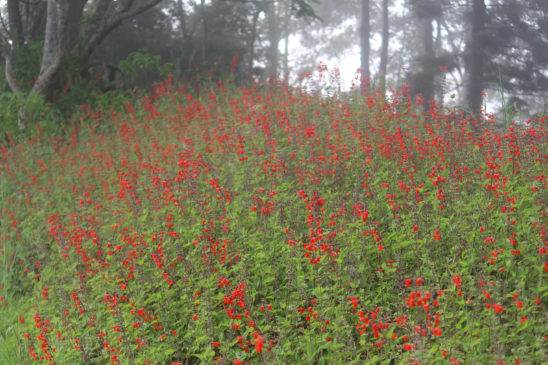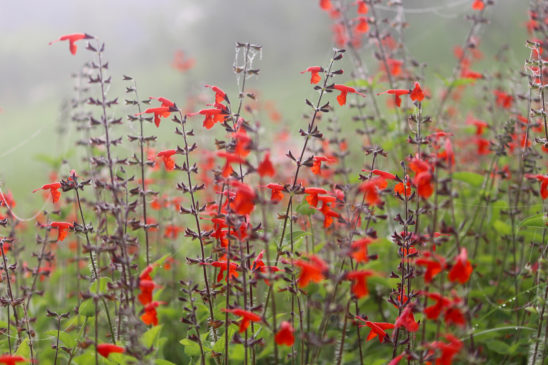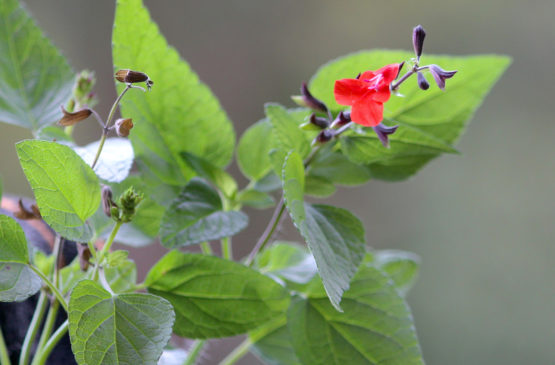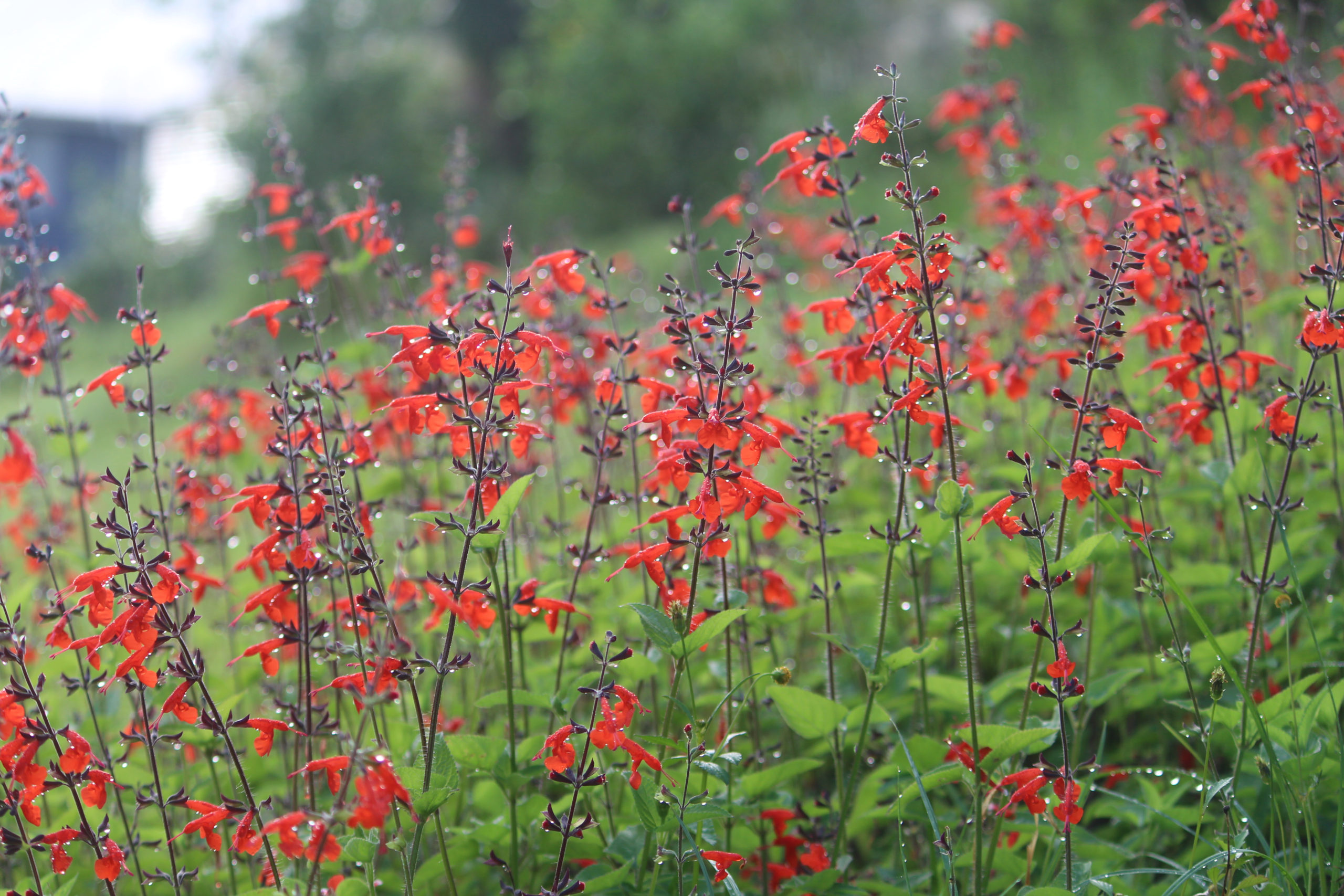 Salvia coccinea literally translates as scarlet sage, and it’s an apt descriptor for the original plant, although there are several forms including pink and white flowers. It is also known as tropical sage, as it comes from the tropics of South America (BC). This salvia is unusual as for practical purposes it is an annual, and its free self-sowing has let it naturalise in many places. It grows occasionally as a roadside weed here in Northern New South Wales.
Salvia coccinea literally translates as scarlet sage, and it’s an apt descriptor for the original plant, although there are several forms including pink and white flowers. It is also known as tropical sage, as it comes from the tropics of South America (BC). This salvia is unusual as for practical purposes it is an annual, and its free self-sowing has let it naturalise in many places. It grows occasionally as a roadside weed here in Northern New South Wales.
Description
 S. coccinea is generally short, around 50 cm, with a few branches off the central stem. For me a distinguishing feature (especially for the pink forms) is the covering of fine hairs, especially on the stems but also on both sides of the leaves. Leaves are minty green, triangular, to 60 mm long and 40 mm wide at the base.
S. coccinea is generally short, around 50 cm, with a few branches off the central stem. For me a distinguishing feature (especially for the pink forms) is the covering of fine hairs, especially on the stems but also on both sides of the leaves. Leaves are minty green, triangular, to 60 mm long and 40 mm wide at the base.
The flowers have a wide lower lip, and protruding stamens and pistil. They are about 25 mm long, and the calyx about 10 mm. The flower spikes are short, around 40 mm, bearing the flowers loosely. A range of colour cultivars are available from scarlet through pink to white.
Cultivation
 Although it grows from cuttings, coccinea produces abundant seed which germinates readily. If you get it going in early Spring it will establish and then re-seed. I have it in a mass bed confined by grass on one side and a driveway on the other, and it just does its own thing and stays thickly planted, so that you don’t notice individual plants come and go.
Although it grows from cuttings, coccinea produces abundant seed which germinates readily. If you get it going in early Spring it will establish and then re-seed. I have it in a mass bed confined by grass on one side and a driveway on the other, and it just does its own thing and stays thickly planted, so that you don’t notice individual plants come and go.
It spreads far and wide but can easily be weeded or mowed out. In Winter I cut it back to just 150 mm or so with hedge shears.
In a warm climate it grows all year. Here it doesn’t need watering, and tends to dry and wilt through Spring, then bursts back after rain to flower immediately. Flowering is mainly Spring, Summer and Autumn. The flowers tend to drop after midday, so planting where it will be seen in the morning gives best effect.

